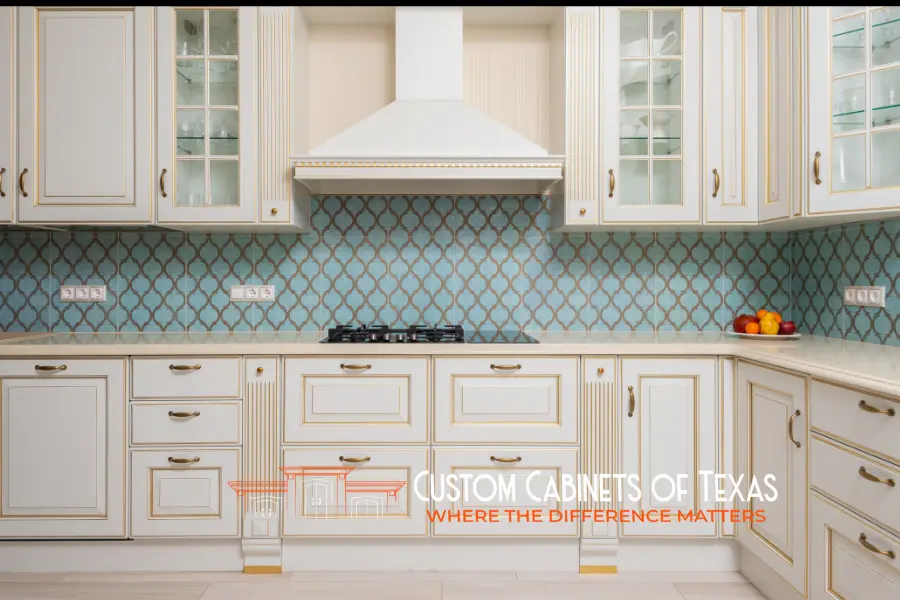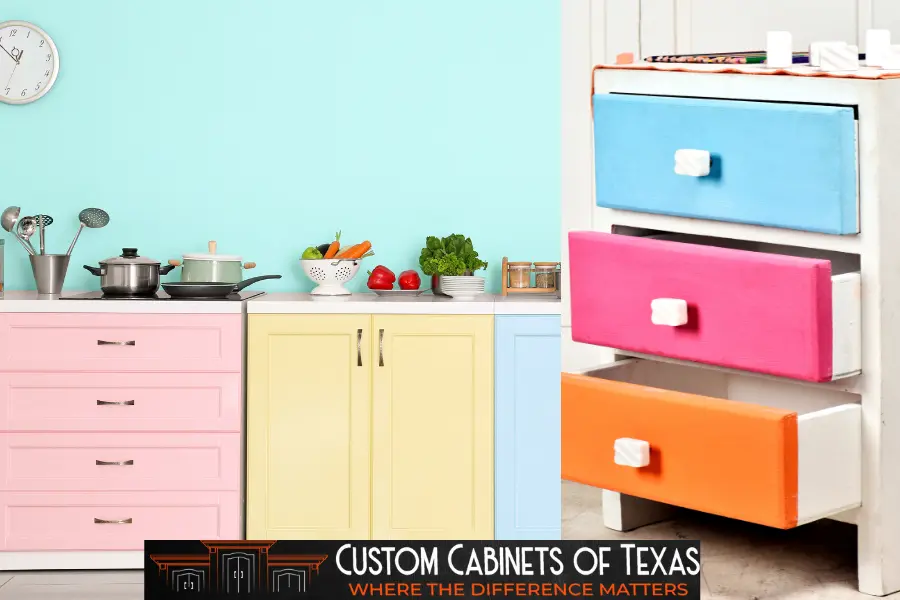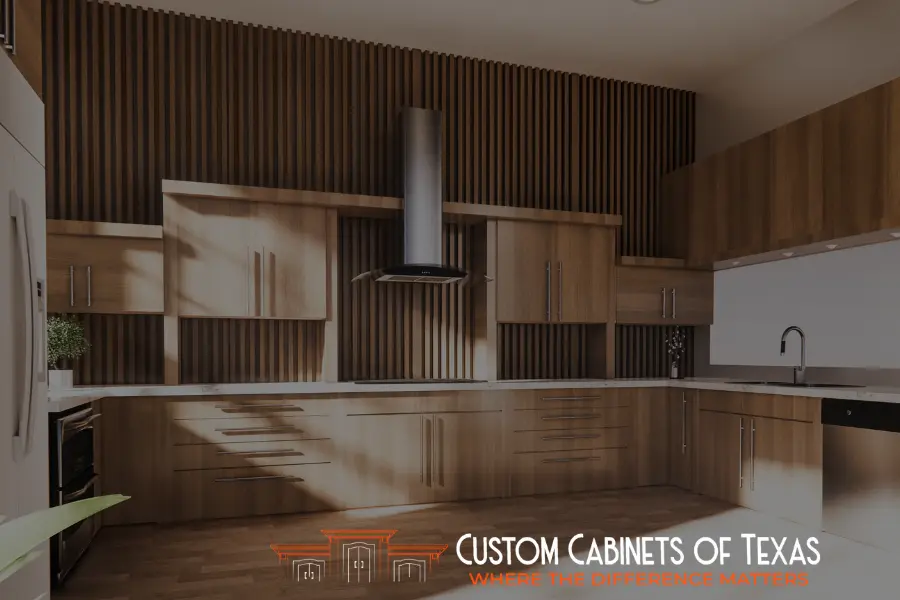If your kitchen or bathroom is looking dingy but your cabinets are in good shape, staining them could be the solution. It’s an affordable way to transform your space without the price of a complete overhaul. Whether you opt for a darker stain for a more contemporary look or a light one for a fad-driven farmhouse feel, staining can transform wood with its flexibility, beauty and durability. In this comprehensive guide, we’ll tell you how to stain wood cabinets in a step-by-step approach, which tools and materials you require, the best safety measures you can take, and the frequently asked questions.
Changing Cabinet Colors With Stain: What You Need to Know
Before you pick up a brush, it’s crucial to know what staining wood cabinets entails and if your cabinets are good candidates for it.
All Cabinets Able to Be Stained
Stain works best on solid wood cabinets, or you can choose wood veneer or veneers. If your cabinets are laminate or MDF, the stain might not take as well, and you might be better off painting or replacing them.
Better then Painting
Because unlike juicy paint, stain seeps into the wood leaving you with a more warm and natural finish versus say the slick feeling of paint. It also can last longer over time, especially when you use the right topcoat.
How to Stain Cabinets Darker
The easiest thing to do is stain the cabinets a darker color. You can then get ready to apply darker shades of stain like walnut, espresso or mahogany, using stains that can transform your cabinets to a rich and updated design after a little bit of light sanding and without having to do much by way of preparation.
How to Stain Cabinets Lighter
Cabinets are trickier to lighten. You will probably need to strip the existing stain completely, and possibly even bleach the wood, and then give it a light stain, like oak or maple. It’s a slow process, but it can be done with some patience and the right tools.
Stain Over Painted Cabinets
Staining over painted cabinets is not recommended unless the paint is removed completely. Paint effectively seals the stain in the wood, so you’ll have to use a chemical stripper or aggressively sand to return to the original surface.

Safety Tips for Staining Wood Cabinets
- If you are refinishing wood cabinets, work in a well-ventilated area and use a dust mask to keep from inhaling wood dust.
- Stains are hazardous to your health Your mother always told you not to play with stains.
- Use gloves Yours eyes and mouth are entry points for toxins from the fumes Wear mask.
- This is one case when oil-based stains are actually safer than water based stains.
- Be sure to work in a well-ventilated area so you don’t breath in any fumes.
- Wear nitrile gloves, safety goggles and a mask to cover skin, eyes and lungs.
- Never use the stain near open flames or heat sources, it’s incredibly flammable.
- Dispose of rags, they may catch fire by themselves. Place in lidded metal can or soak in water prior to disposing of them.
- Vital Supplies for Staining Cabinets
- Having the right equipment makes your job easier and your results more professional.
Tools You’ll Need: How to Stain Wood Cabinets
- Screwdriver/drill (for removing hardware)
- 120- and 220-grit sandpaper or orbital sander
- Clean lint-free cloth or tackcloth
- Paintbrushes or staining pads
- Vacuum with brush attachment
- Tarpaulin(s) or plastic sheeting
- Stir sticks for mixing stain
- Wood Stain (select either oil or water based)
- (wood conditioner – which helps avoid splotching)
- Degreaser and or wood cleaner (TSP for example)
- Protective coat (polyurethane, water based finish or lacquer)
Step-by-Step Instructions: How to Stain Wood Cabinets Like a Pro
Step 1: Remove Cabinet Hardware
Unscrew and stash hinges, knobs and drawer pulls. Label plastic bags for each door to keep parts organized.
Step 2: Take Off Cabinet Doors and Drawers
Label all your doors and drawers with painter’s tape so that you can put them back exactly where they belong. This saves confusion and time during assembly later.
Step 3: Clean All Cabinet Surfaces Thoroughly
If you have oil, grime or food splatter, wipe it with a degreaser or combination of warm water and dish soap. Concentrate much of your work in the space above the stove and sink.
Do not drench the cabinets. Wipe down with a damp cloth, and dry well afterwards.
Step 4: If Needed, Deep Clean Stubborn Areas
Scrub heavily soiled areas with a scrub sponge or soft brush. Wipe down with a clean cloth and let it air dry.
Any remaining residue may disrupt the uniform application of the stain.

Step 5: Sand the Cabinet Surfaces
Start with 120 grit sandpaper to rough up the surface and remove the finish. 220-grit to follow up for a flat surface.
Always sand with the grain to avoid scratches. A faster option is to use an orbital sander on flat surfaces.
Step 6: Remove All Dust
Dust surfaces and crevices with the brush tool of your vacuum. Then wipe everything down with a tack cloth to pick up any lingering particles.
Any dust that remains will destroy your finish by giving it the feel of coarse sand.
Step 7: Apply Wood Conditioner
Some varieties of softwood, such as pine, cherry and maple, absorb stain unevenly. Use pre-stain wood conditioner for more even color. Allow it to be absorbed, for about 15 minutes, then remove excess.
Step 8: Apply the Wood Stain
Mix the stain and paint it using a brush or staining pad. Work in small sections, in the direction of the wood grain. After several minutes, absorb any excess with a clean cloth.
The more time you give the stain to set before you wipe the darker the finish.
Step 9: Apply a Second Coat
After the first coat dries, which generally takes about 24 hours, more coats will lead to a deeper color. Same scenario as with first coat. If you keep coloring, at some point you’re going to muddy up the natural grain, so stop when you’ve reached the tone you want.
Step 10: Apply a Protective Topcoat
Once the stain has dried completely (24-48 hrs), apply a clear topcoat to protect the finish. Which is the best wood to use for kitchen and bathroom, especially with polyurethane?
If you prefer to keep lighter without yellowing over time, you can use a water-based topcoat.
Reassembling Your Cabinets After Staining
- Reattach Doors and Drawers: Reattach each door and drawer the way you had labeled them. Be as gentle as possible, so as to not scratch your new finish.
- Reinstall Cabinet Hardware: Buff your existing hardware or add cool new handles for an updated look.
Conclusion:
Staining wood cabinets is a DIY project that offers high visual impact without a high price. With just time, patience, and the right tools, you can upgrade your kitchen or bathroom to look fresh, stylish, and customized to your taste. By following this detailed step-by-step guide, you’ll avoid common mistakes and enjoy results that look like they came straight from a designer showroom.
If you don’t want to DIY with Custom Cabinet, we’ve got you covered for custom cabinets that are built specifically for you and to your own personal requirements. Contact s at Custom Cabinet TX, whether you want to renovate a small space or add some new storage, we can help you bring your ideas to life with a free design and high-quality materials like granite, and de-luxe hardware to professional installation.



